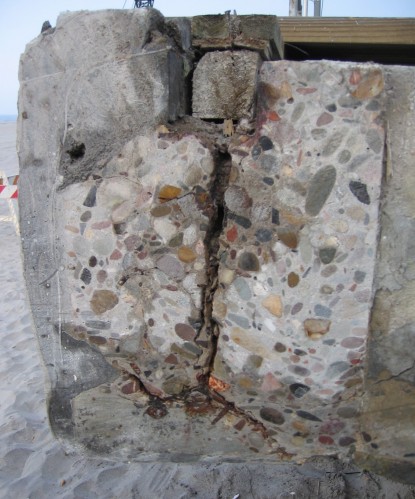水泥本身ph值11鹼性,所以上行 ph neutral 是什麼意思?表面中性?
Underwater Sculpture
So I heard of this sculptor, Jason Decaires Taylor, who makes underwater sculptures for the purpose of creating artificial coral reefs. If you are not familiar with his work, check it out:http://www.jasondecairestaylor.com/
I have scoured the internet for interviews with him, and news articles related to his work, to try and find out what kind of cement he is using. The only thing I could find out is that it is 'grade 2 cement' which is marine grade, and he mixes sand and micro silica. He also mentions using 'various other additives' to make the cement ph neutral, which is important to promote coral growth.
Does anyone have any idea what one might mix with cement to make it ph neutral?? I'm convinced the cement is important, because coral take to his sculptures so well. Coral will grow on many things, but not as well, and with the same results.
I also found a technique called 'Biorock' with looks pretty interesting, but not really my style. http://www.biorock.net/Technologies/index.html
With a little bit of electricity, you can make steel structures come to life!!
Seeing Taylor's work raised my interest in under water sculpture in general, but I think cement seems more natural and would integrate itself better in the environment. But what mixture is Taylor using??! Any thoughts?
Why pH is important
pH is a critical factor in the chemistry of concrete. Portland Cement, the “binding” component in concrete, (the other components being rock [aggregates] and water) has a pH approaching 11, which is very alkaline. If you remember your high school chemistry, neutral pH is 7. Above 7 is alkaline, and below 7 is acidic. In order for the cement to hold together the other components, it is important for it to remain at or near a pH of 11.
When salt (pH of roughly 6 to 7) or other acids, such as acid rain, are introduced onto (and therefore “into” as well) the concrete, they enter into the small pores and micro-cracks of the concrete and attack the surrounding materials, lowering their pH. As the pH is lowered, the cement’s ability to hold things together is compromised. Exposed to acidic environments for a long enough period of time, and all that will be left is sand and rock.

Even concrete that is not subjected to de-icing salts is subjected to a process that lowers pH. The process is called “Carbonation.” Carbonation is a reaction between the cement in concrete and carbon dioxide in the air. Carbonation progressively lowers the pH in concrete, though the process is somewhat slow (about 6 years to progress 50mm or 2 inches). When carbonation (lowered pH) reaches the level of the steel reinforcement, it attacks the thin protective layer of iron oxide surrounding the reinforcement and initiates corrosion. Since steel can expand up to 6 times its size when corroding, the resulting pressure can cause the surrounding concrete to crack and break. In structural concrete, this can result in structural failure.
A good indicator of the level of degradation in your concrete is a pH test. We use a digital pH meter, which instantly reads the pH in the concrete. If your concrete’s pH is between 9 and 11, you are in pretty good shape (and your concrete probably looks pretty good as well). pH between 7 and 9, and the concrete is starting to break down. You may notice some surface damage at this level – but not always. pH around 6, and you certainly have visible damage. pH readings below 6, and you have severely deteriorated concrete. If your pH reading is around 4, you will need to replace the concrete, for there is little left to hold it together.
 Another way to test the pH level is to take a core sample and spray it with Phenolphthalein. Phenolphthalein is a pH indicator that turns magenta when the pH is over 9.6. If the core turns completely magenta when sprayed, the pH is still in the safe range. If it does not change color, the pH is below the safe range in concrete. This test is a good test to see how close to the level of reinforcement carbonation has reached.
Another way to test the pH level is to take a core sample and spray it with Phenolphthalein. Phenolphthalein is a pH indicator that turns magenta when the pH is over 9.6. If the core turns completely magenta when sprayed, the pH is still in the safe range. If it does not change color, the pH is below the safe range in concrete. This test is a good test to see how close to the level of reinforcement carbonation has reached.
CreteDefender penetrates and fill the pores and micro-cracks of concrete with a solution that forms a gel and hardens. The pH of this gel is roughly 11 – the same as the surrounding concrete. A part of this reaction creates alkali metal molecules in the concrete which raises and stabilizes the pH in the concrete and absorb carbon dioxide. The hardened gel prevents the intrusion of water, salts, acid, or other chemicals
Technical Product Info
Test Results
- Freeze/Thaw Durability Test
- Chloride (salt) Test
- Waterproofing Test
- Chemical Resistance Test
- Scaling/dusting Test
- Abrasion Test
- Slip Resistance Test
沒有留言:
張貼留言